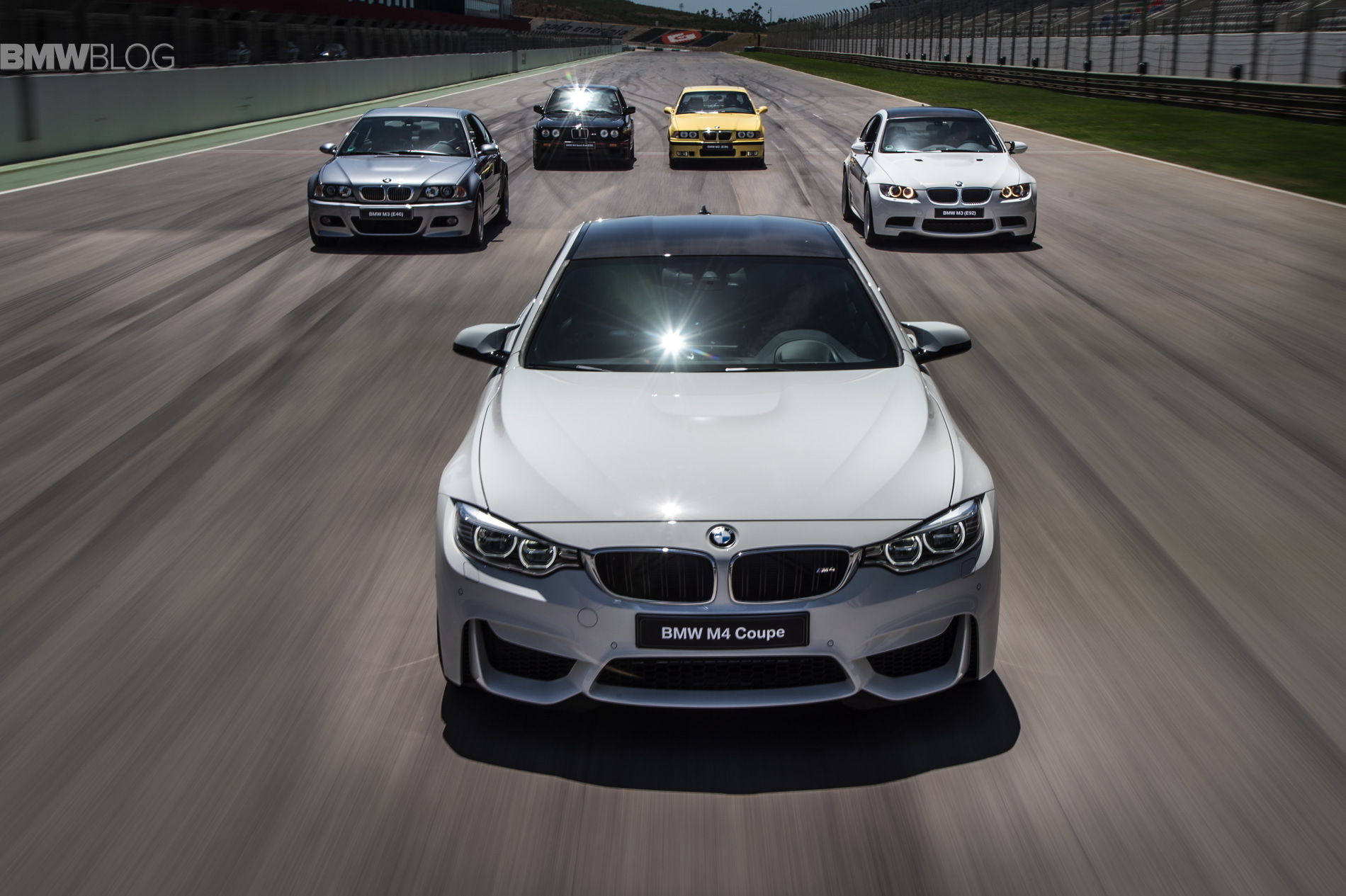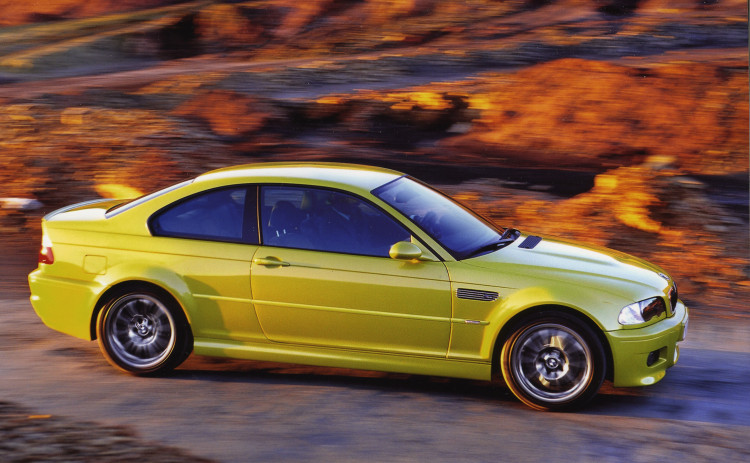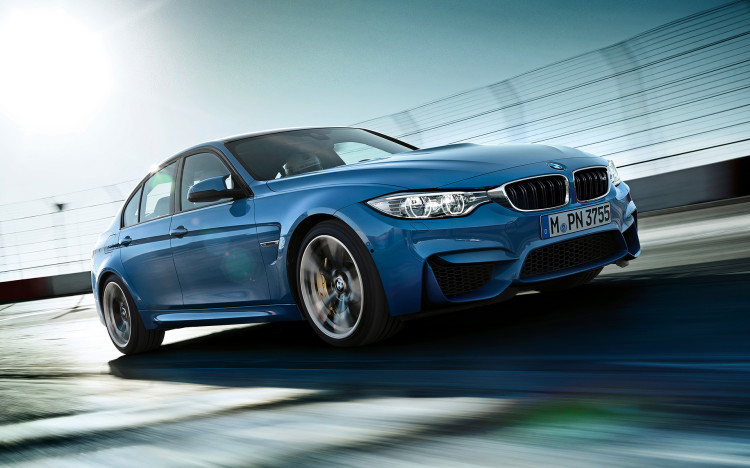In 2012, an advertisement by BMW North America read: “We don’t make sports cars. We don’t make SUVs. We don’t make hybrids. We don’t make luxury sedans. We only make one thing. The Ultimate Driving Machine.”
Since the 1970s, “The Ultimate Driving Machine” has been BMW’s tagline and rightly so. Anyone who has owned a Bimmer will tell you the handling of these monsters comes second to none. Moreover, the M3 is one of the creations by the German marque that has helped cement the famous tagline.
The M3 has one of the most loyal followings in the automotive world. The current generation may be facing stiff competition from the Audi RS4, Mercedes-AMG C63 and the Cadillac ATS-V but its unlikely any M3 owner would want to trade his prized asset for any one of the three.
Defined as the “benchmark for four-seater performance cars” by Fifth Gear host Tiff Needell, what follows is a historical look at the M3 and its rise to prominence.
E30
The E30 M3 was introduced in 1987 for DTM racing, which it won twice (1987 and 1989). BMW wanted to provide a competitor for the Mercedes-Benz 190E “2.3 16-V” and the Audi Quattro cars.
The road-spec vehicles were primarily built for homologation purposes since 5,000 units were required to be produced so that the car could compete in the World Touring Car Championship (WTCC). The S14 engine was derived from the M1, getting a naturally aspirated 2.3-liter inline-four capable of generating 191 hp. It was paired to a five-speed manual gearbox. Later on, BMW also built the more powerful “EVO2” and “Sport Evolution” models with the latter getting a 2.5-liter inline-four developing 235 hp. European customers also got a convertible variant in 1988, although it didn’t land on the United States shores.
While the M3 went on to dominate the motoring arena, winning the WTCC, 24 Hours of Spa and Nurburgring, the British Touring Car Championship and the Italia Superturismo Championship, the road models weren’t a resounding success from the word go. Yet, 18,000 units were sold, with around 5,200 making way to the USA.
E36

The E36 M3 was introduced in 1992 and was in the showrooms by November of that year. It didn’t follow the same aggressive exterior look of the E30 and the interiors were a bit outdated. Furthermore, the handling wasn’t as good as that of the first-gen M3, but the E36 M3 was very easy to modify and a menace on the track.
Not to forget, this was the first M3 to get the inline-six engine with the power being supplied by a naturally aspirated 3.0-liter motor that pumped out 286 hp in the European models and 240 hp in the American ones. The 0 to 100 km/h time was just over six seconds. A 3.2-liter inline-six version came up in the second year of production with increased torque output (from 225 lb-ft to 240 lb-ft), while the E36 M3 also featured BMW’s sequential manual gearbox (SMG).
Apart from the coupe, customers got the option for four-door sedan and convertible variants. A total of 46,525 coupes, 12,114 convertibles and 12,603 saloons were produced with majority of the manufacturing taking place at BMW’s factory in Regensburg, Germany.
E46
The E46 M3 was more refined than the E36, had a stunning exhaust system, tidy interior and is often considered as the best M3 to have been ever produced. Although provided with the SMG drivelogic transmission, the manual was more highly rated and the handling of the vehicle got phenomenal reviews from the critics and buyers.
“What’s the new M3 like to drive? A tach-pegging, tire-abusing, power-sliding, apex-hitting, ear-pleasing, ultra-precise high-speed thrill ride would be one way to describe it,” were the words of American publication Motor Trend. Road and Car labeled it as their favorite sports car of all time in 2009. The E46 M3 was truly a legend.
Under the hood was a 3.2-liter naturally aspirated gasoline engine generating 338 hp and 365 Nm of torque. The car could sprint from 0 to 100 km/h in 5.1 seconds. There were both coupe and convertible versions, although BMW decided against producing any four-door E46 M3. Production lasted from 2000 to 2006 with over 85,000 models coming off BMW’s facility.
A special mention goes to the E46 M3 CSL that borrowed weight-reduction technologies from BMW’s stint in Formula One and holds a pivotal presence in the company’s heritage.
E90/E92/E93
Much to the scrutiny of the BMW enthusiasts, the fourth-gen M3 ditched the inline-six engine for a 4.0-liter V8. It was available in sedan, coupe and convertible forms. The coupe was the first to be introduced, at the 2007 Frankfurt Motor Show. BMW likely returned with the sedan M3 to increase sales in the North American region where the E36 M3 sedan was very popular.
The fourth-gen M3, called the E92 among the BMW insiders, got 414 hp at 8300 rpm and 400 Nm of torque. A six-speed manual transmission was standard but BMW also offered a very efficient M-DCT gearbox. The design of the car was modern and the cabin was elegant. Many people loved the handling and after the tremendous success of the E46, it can be said that BMW did not disappoint.
“This M3 is the best car, and always will be, and there’s no point in ever thinking otherwise,” Jeremy Clarkson said about the E92 M3. Mercedes came up with the C63 AMG as its answer to the M3 but frankly, it did not even come close to its BMW counterpart.
F80
The current generation M3 is a four-door saloon with the convertible and coupe variants getting the M4 badge.
Nonetheless, the inline-six makes a comeback with the 3.0-liter twin-turbocharged unit producing 425 hp and 550 Nm of torque. BMW claims the M3 can reach 100 km/h in just 4.3 seconds with the optional automatic dual-clutch gearbox. While the car has a base price of more than $65,000, several ‘options’ including carbon-ceramic brakes can increase the cost by at least $20,000.
That said, the F80 M3 has been well-appreciated for its performance by the car community. Some argue that it may suffer owing to the threat posed by the Mercedes-AMG C63 S and the shift from the naturally aspirated engine in order to keep up with the stringent emission regulations, yet, it only came up last year and the jury is still out on the F80 M3.











































































